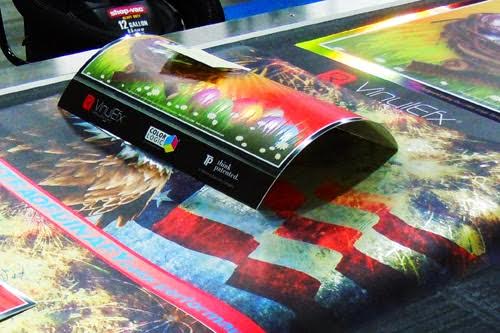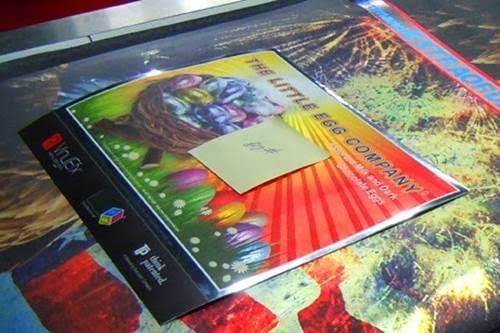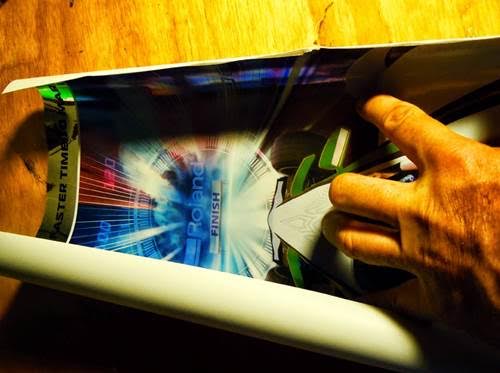
What causes Liner Curl?
16/11/15 09:47 Filed in: Technical Problems
Would you like paper or plastic? In the sign, screen and digital markets, vinyl film manufacturers generally pick paper release liners. Plastic liners are more frequently used for label stock. Paper affords many advantages compared to plastic. It is very heat stable…more stable at high temperatures because plastic can deform. Paper also provides consistent performance. Most importantly, paper is cost effective.
The disadvantage is that because it is paper, it can easily gain or lose moisture depending on the shop environment. When I worked for screen printers, it was a common practice to condition the stock the day before a print run to stabilize the sheet, so it would lay flat on the bed of the press. Sheeted material was racked face to face so the release liner could gain or lose moisture depending on the shop environment.
Changes in humidity can cause paper liners to grow or contract. When exposed to excessive humidity, some liners can grow and curl toward the print. When the liner loses moisture, it can contract causing the sheet to curl toward the liner side. See photograph A.

Photograph A
Regardless of which way the liner curls, it can give printers fits. The solution is a polycoated release liner. Typically a plastic resin is extruded onto either one or both sides of a paper sheet. This gives you the best of both worlds. You can the advantages of a plastic liner, as well as a cost-competitive paper liner. The polyolefin coating improves the resistance of the liner to moisture absorption as well as improving the overall dimensional stability and layflatness of the sheet, as shown in photograph B.

Photograph B.
Other factors, however, can affect the dimensional stability of the liner during processing at the film manufacturer or when digitally printing and laminating. Here are a couple of examples:
• During adhesive coating, the release liner is exposed to heat, which can dry the liner out. Exposed to a humid shop environment, dry liners can grow and curl. To combat this problem, many manufacturers will remoisturize their liners.
• Exposure to heat can result in the liner losing moisture, which can result in the liner shrinking causing poor layflat or sheet curl.
• Mechanical tension during lamination can stretch the overlaminate. Stretched films tend to stretch back to their original shape, which can result in the laminated print curling.
Printing with heavy concentrations of solvent or ecosolvent ink can result in the print curling. Solvent inks can consist of 70% or more of solvent. When the solvent evaporates, the inks contracts. This often results in the graphic curling to the print side as shown in photograph C.

Photograph C.
© 2014 Jim Hingst
RTape is a division of Nekoosa Holdings, Inc.
The disadvantage is that because it is paper, it can easily gain or lose moisture depending on the shop environment. When I worked for screen printers, it was a common practice to condition the stock the day before a print run to stabilize the sheet, so it would lay flat on the bed of the press. Sheeted material was racked face to face so the release liner could gain or lose moisture depending on the shop environment.
Changes in humidity can cause paper liners to grow or contract. When exposed to excessive humidity, some liners can grow and curl toward the print. When the liner loses moisture, it can contract causing the sheet to curl toward the liner side. See photograph A.

Photograph A
Regardless of which way the liner curls, it can give printers fits. The solution is a polycoated release liner. Typically a plastic resin is extruded onto either one or both sides of a paper sheet. This gives you the best of both worlds. You can the advantages of a plastic liner, as well as a cost-competitive paper liner. The polyolefin coating improves the resistance of the liner to moisture absorption as well as improving the overall dimensional stability and layflatness of the sheet, as shown in photograph B.

Photograph B.
Other factors, however, can affect the dimensional stability of the liner during processing at the film manufacturer or when digitally printing and laminating. Here are a couple of examples:
• During adhesive coating, the release liner is exposed to heat, which can dry the liner out. Exposed to a humid shop environment, dry liners can grow and curl. To combat this problem, many manufacturers will remoisturize their liners.
• Exposure to heat can result in the liner losing moisture, which can result in the liner shrinking causing poor layflat or sheet curl.
• Mechanical tension during lamination can stretch the overlaminate. Stretched films tend to stretch back to their original shape, which can result in the laminated print curling.
Printing with heavy concentrations of solvent or ecosolvent ink can result in the print curling. Solvent inks can consist of 70% or more of solvent. When the solvent evaporates, the inks contracts. This often results in the graphic curling to the print side as shown in photograph C.

Photograph C.
© 2014 Jim Hingst
RTape is a division of Nekoosa Holdings, Inc.